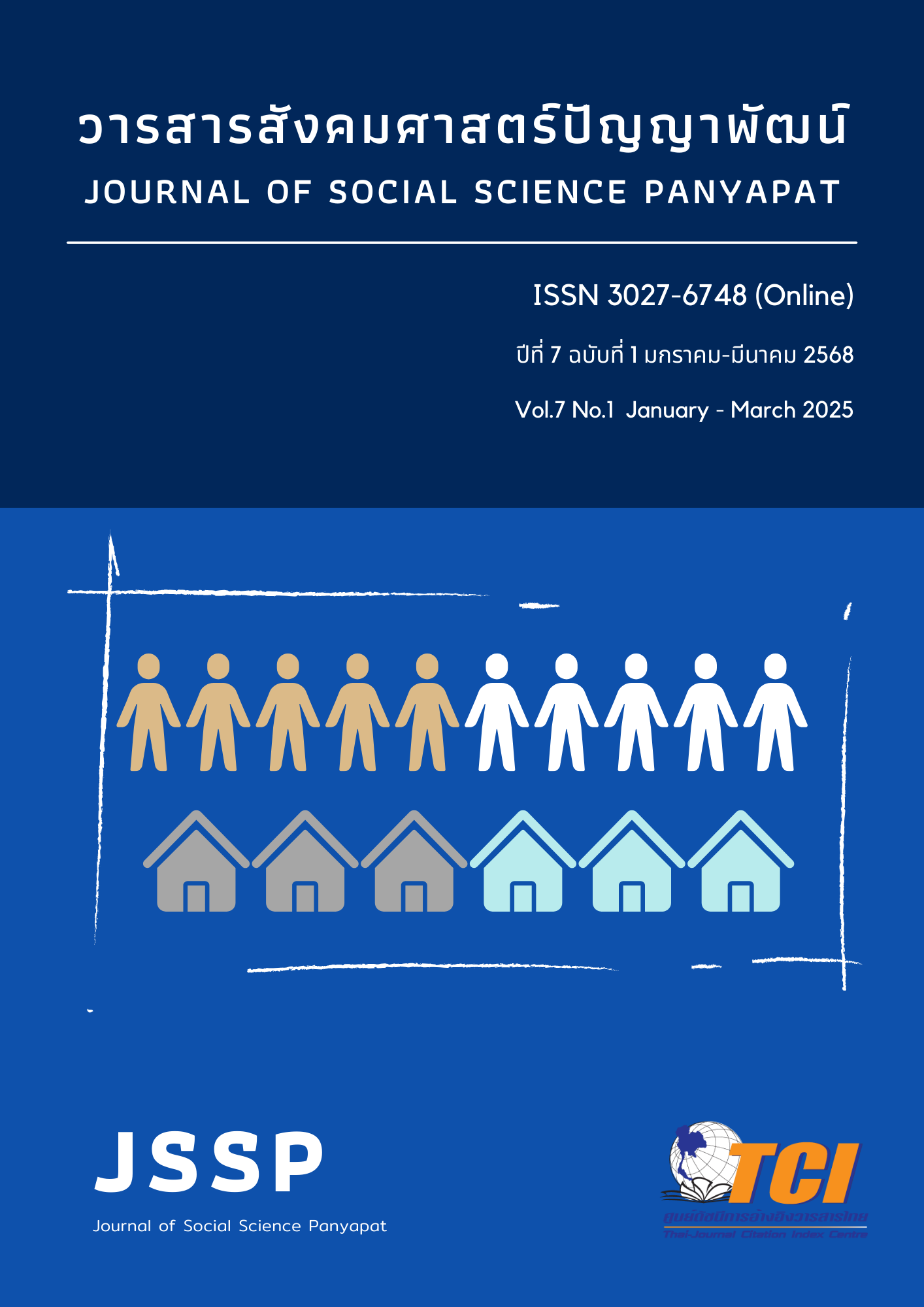The Results of Using Teams-Games Tournament (TGT) Technique Combined with Multimedia on Multiplication Skills Development in Mathematics for Grade 4 Students
Keywords:
Academic Achievement, Calculation Skills, Teams-Games Tournament (TGT) TechniqueAbstract
This article aimed (1) to develop Multimedia for teaching Multiplication in Mathematics for Grade 4 students; (2) to compare students’ calculation skills before and after using the Teams-Games Tournament (TGT) technique combined with Multimedia for learning multiplication; and (3) to compare students’ academic achievement in multiplication before and after using the Teams-Games Tournament (TGT) technique combined with Multimedia. The sample group consisted of 30 Grade 4 students from Ban Thung Khai School, Yan Ta Khao District, Trang Province, during the first semester of the academic year 2024, selected through Purposive Sampling, instruments for data collection were (1) Lesson plans of the Teams-Games Tournament (TGT) Technique Combined with Multimedia to enhance Multiplication Skills in Mathematics for Grade 4 students, (2) multimedia materials on multiplication, (3) An evaluation exam on multiplication skills, and (4) an achievement test on multiplication. Data were analyzed using descriptive statistics and content analysis. The findings of the study revealed that: 1) The developed multiplication multimedia received a very highs quality rating (M = 4.65, SD = 0.50). 2) Students demonstrated significantly higher multiplication skills after learning through the Teams-Games Tournament (TGT) technique integrated with multimedia, with statistical significance at the .05 level. 3) Students' academic achievement in multiplication significantly improved after engaging with the Teams Games Tournament (TGT) technique integrated with multimedia, with statistical significance at the .05 level.
References
ภาวดี วงศ์ดี. (2561). การศึกษาผลสัมฤทธิ์ทางการเรียนวิชาคณิตศาสตร์เรื่อง การแปลงทางเรขาคณิตสำหรับนักเรียนชั้นมัธยมศึกษาปีที่ 3 โดยการจัดกิจกรรมการเรียนรู้แบบแบ่งกลุ่มผลสัมฤทธิ์ร่วมกับโปรแกรม GSP. (วิทยาศาสตรมหาบัณฑิต, มหาวิทยาลัยบูรพา).
ภิรพุทธิ์ สว่างสุข. (2563). ผลการจัดการเรียนรู้แบบร่วมมือโดยเทคนิคกลุ่มแข่งขัน (TGT) ร่วมกับการใช้ปัญหาปลายเปิดเรื่อง อัตราส่วน สัดส่วนและร้อยละที่มีต่อผลสัมฤทธิ์ทางการเรียนคณิตศาสตร์และความสามารถในการแก้ปัญหาทางคณิตศาสตร์ของนักเรียนชั้นมัธยมศึกษาปีที่ 1. (การศึกษามหาบัณฑิต, มหาวิทยาลัยบูรพา).
รุจิกาญจน์ ไชยสุนันท์, พิสมัย รบชนะชัย พูลสุข และ เชาวฤทธิ์ จงเกษกรณ์. (2567). การพัฒนาสื่อมัลติมีเดีย เรื่อง มุ่งมั่นและศรัทธาของนักเรียนชั้นประถมศึกษาปีที่ 3 โรงเรียนบ้านดอนกระชาย อำเภอพยุหะคีรี จังหวัดนครสวรรค์. บวรพัฒน์, 2(2), R1044.
โรงเรียนบ้านทุ่งค่าย. (2566). รายงานผลการประเมินตนเองของสถานศึกษา (SAR) ปีการศึกษา 2566. ตรัง: โรงเรียนบ้านทุ่งค่าย.
สถาบันส่งเสริมการสอนวิทยาศาสตร์และเทคโนโลยี. (2560). หลักสูตรแกนกลางการศึกษาขั้นพื้นฐาน พุทธศักราช 2551 (ฉบับปรับปรุง พ.ศ. 2560). สืบค้นจาก https://web.sesaokpp.go.th/news/18.
สำนักวิชาการและมาตรฐานการศึกษา. (2563). แนวทางการพัฒนาการเรียนการสอนคณิตศาสตร์. สืบค้นจาก https://academic.obec.go.th/images/document/1580786328_d_1.pdf.
อัมพร ม้าคะนอง. (2559). ทักษะและกระบวนการทางคณิตศาสตร์ : การพัฒนาเพื่อพัฒนาการ. (พิมพ์ครั้งที่ 3). กรุงเทพฯ: ศูนย์ตำราและเอกสารทางวิชาการ คณะครุศาสตร์ จุฬาลงกรณ์มหาวิทยาลัย.
Best, J. W., & Kahn, J. V. (2016). Research in education. Tamil Nadu: Pearson Education India.
Vaughan, T. (2001). Multimedia: Making it Work. (6th ed.). New York: McGraw-Hill.
Downloads
Published
How to Cite
Issue
Section
License
Copyright (c) 2025 Journal of Social Science Panyapat

This work is licensed under a Creative Commons Attribution-NonCommercial-NoDerivatives 4.0 International License.


